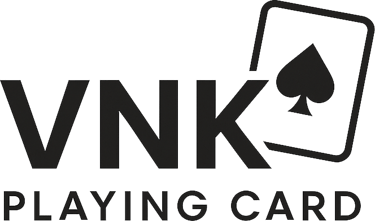Blue Core vs. Black Core: The Ultimate Card Stock Guide
Worried about card transparency? We compare Blue Core vs. Black Core paper stocks. Learn why German Black Core is the gold standard for opaque, casino-quality cards.
BLOG
11/23/20252 min read
Introduction: The "Flashlight Nightmare"
Imagine this: You ship 5,000 decks to your Kickstarter backers. A week later, a review pops up on Reddit. A player held your card up to a lamp, and they could see the rank and suit through the back. Game over.
In the world of custom card printing, Paper is not just Paper. It is the structural integrity of your product.
Many creators obsess over art but ignore the "Core"—the hidden layer inside the card stock that determines opacity, snap, and durability. Today, we put the two industry titans head-to-head: Standard Blue Core vs. Premium Black Core.
1. What is the "Core" and Why Does It Matter?
Professional playing card stock is a sandwich. It consists of two sheets of paper glued together with an opaque adhesive. That adhesive layer is the Core.
Grey Core: The budget option. Often found in cheap dollar-store decks. Avoid for serious projects.
Blue Core: The industry standard for board games.
Black Core: The gold standard for casinos and competitive TCGs.
2. The Blue Core: The Best Value Workhorse
"Blue Core" (often 280gsm - 300gsm) uses a blue-tinted adhesive.
Performance: It offers excellent stiffness and "snap" (the ability to recover its shape after bending).
Opacity: It blocks about 90-95% of light. Under normal room lighting, it is opaque. However, under a direct, strong LED spotlight, you might see a faint outline.
Best For:
Family board games.
Educational flashcards.
Games where "hidden information" is not critically high-stakes.
Cost: More affordable. It allows you to keep your unit price low while still feeling "professional."
3. The Black Core: The Casino Standard
"Black Core" (often 310gsm or 330gsm, famously sourced from German mills like Koehler) is the Rolls-Royce of card stocks.
Performance: It is denser and heavier. The "snap" is aggressive and crisp. When you shuffle Black Core cards, they slide like silk (air-cushion finish) and resist bending.
Opacity: 100% Light Blocking. The black graphite adhesive layer creates a total blackout. You could hold this card against the sun, and the secret on the other side stays safe.
Best For:
Competitive TCGs (Magic: The Gathering style).
Poker and Gambling decks.
Kickstarter "Deluxe Editions."
Cost: Expect a 15-20% higher material cost compared to Blue Core.
4. Data Comparison: Breaking Down the GSM Myth
Don't be fooled by "GSM" (Grams per Square Meter). A 350gsm cheap art paper will feel softer and worse than a 310gsm German Black Core. Density > Weight.
Here is the factory data:
Factory Insider Tip: The "Humidity Factor"
"Are you printing cards with heavy Foil on both sides? Use 330gsm Black Core. Heavy foil application involves heat and layers. Thinner paper (Blue Core) might curl or warp (the 'Pringles effect') when heavily foiled. The denser structure of Black Core resists warping much better in humid climates."
Conclusion: Which One Should You Choose?
Building a fun party game on a budget? Go Blue Core. It’s professional and cost-effective.
Building the next competitive TCG where card condition and fairness are paramount? Go Black Core. Your players will feel the difference instantly.
Call to Action (CTA)
Can you feel the difference?
Text on a screen can't tell you how a card shuffles. You need to bend it, snap it, and shine a light through it yourself.
👉 Request our "Core vs. Core" Sample Pack. Includes: 1x Blue Core Deck, 1x German Black Core Deck, and a Free "Light Test" LED Keychain.


Add: Dongci Industrial estate, Shijie Town, Dongguan City, Guangdong Province, China 52300
Copyright 2025 © Dongguan VNK Playing Card Co., Ltd. All Rights Reserved.
CONTACT US
Email: info@vnkplayingcard.com
PRODUCTS
QUICK LINKS


